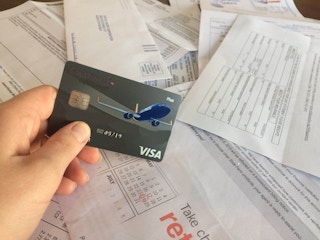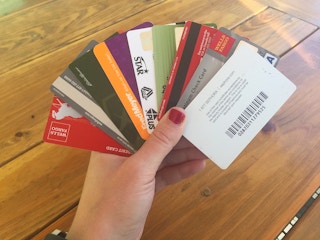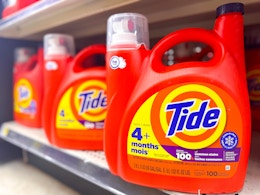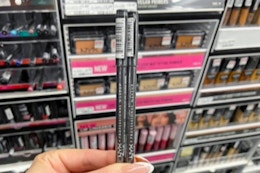Using credit cards to pay these bills is one of the best strategies for racking up credit card points for travel or cash-back rewards.
Download the Krazy Coupon Lady app for more money-saving tips, deals, and coupons.
Bills you can pay with a credit card

What you need to know before you pay bills with a credit card:
-
Double check to see if there are fees or exceptions for using your credit card.
-
If the percentage you’re paying in fees outweighs the percentage you’re getting in rewards points, it’s not worth it! Use cash instead.
-
Pay off your credit card every month to avoid paying interest!
-
For any regular service or monthly lessons you pay for that don’t take a credit card, ask to pay via PayPal in order to use your credit card!
Here’s the list:
-
Amazon Prime
-
Annual home warranty
-
Back-paid taxes
-
Cable
-
Car insurance premiums
-
Cell phone
-
Charitable donations
-
Child care
-
College tuition
-
Dental insurance premiums
-
Dry cleaning
-
Federal income tax
-
Furniture purchase payments
-
Gaming subscriptions
-
Gym membership
-
Health insurance premiums (except Blue Cross/Shield and Humana)
-
Home insurance premiums
-
Home phone line (landline)
-
Homeowners Association (HOA dues)
-
Hospital/medical
-
Household cleaning
-
Hulu
-
iTunes (Apple TV)
-
Internet
-
Lawn care
-
Luxury/shaving/beauty subscriptions (e.g., Honest Company, Dollar Shave Club)
-
Magazine subscriptions
-
Medical co-pays
-
Monthly parking pass
-
Monthly prescriptions
-
Natural gas
-
Netflix
-
Newspaper subscriptions
-
Pest control
-
Pet daycare/boarding
-
Pet insurance
-
Private K-12 school tuition
-
Property tax
-
Rent
-
Renter’s insurance premiums
-
Season tickets/passes
-
Sewer
-
Sling TV
-
State income tax
-
Trash
-
Veterinary bills
-
Vision insurance premiums
-
Warehouse club memberships
-
Water
-
YMCA
Download the KCL app to add and redeem coupons in store


























































































